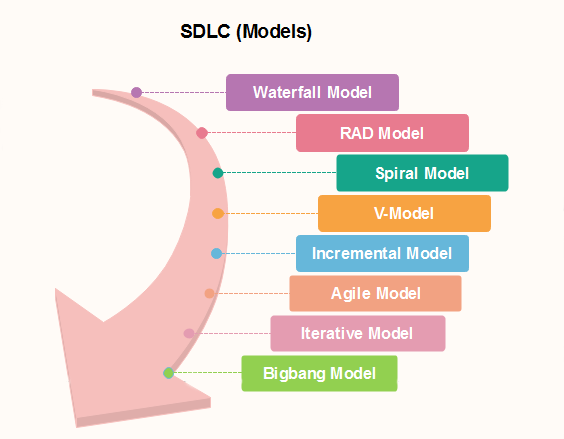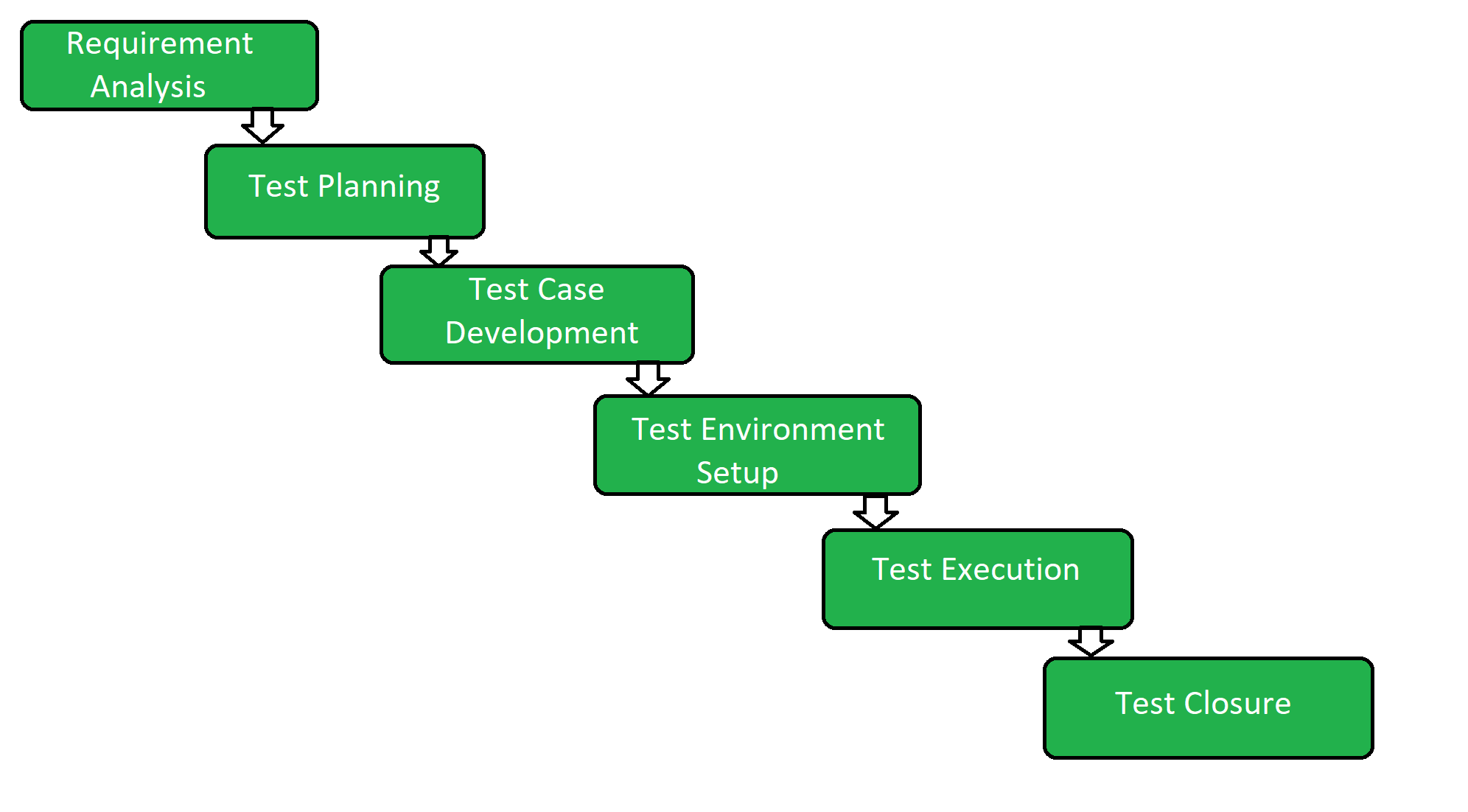Task-3 Manual testing
 DURGAPRASAD KOMATI
DURGAPRASAD KOMATI1.List down all the models of SDLC
Ans : Models of SDLC

Waterfall Model:
A universally accepted SDLC model.
Sequential phases: requirements analysis, design, implementation, testing, integration, and maintenance.
Linear progression from one phase to the next.
Certification techniques mark the end of each phase.
Ensures consistency between stages.
Rapid Application Development (RAD)Model:
Based on the waterfall model but aims for faster development.
Involves business modeling, data modeling, process modeling, application, testing, and turnover.
Focus groups gather system requirements.
Spiral model:
V-Model:
Parallel planning of testing and development.
Verification phases (on one side) and validation phase (on the other side).
Incremental Model:
Iterative approach.
Builds software incrementally, adding features in successive cycles.
Incremental model
Agile Model:
Iterative and flexible.
Emphasizes collaboration, adaptability, and customer feedback.
Sprints, daily stand-ups, and continuous integration.
what is STLC? Also explain all stage in STLC
Software Testing Life cycle

Requirement Analysis:
we can call it as Requirement Gathering, this phase involves studying the requirements from a testing perspective.
The QA team interacts with stakeholders to understand both functional and non-functional requirements.
Activities:
Identify testable requirements.
Prioritize testing focus.
Prepare a Requirement Traceability Matrix (RTM).
Analyze automation feasibility.
Test Planning:
In this phase, a Senior QA manager determines the test plan strategy.
Effort and cost estimates are calculated for the project.
Resources, test environment, limitations, and schedules are defined.
The finalized Test Plan is prepared.
final output:
- Comprehensive test plan.
Test Case Development:
Test cases are created based on requirements and test scenarios.
Activities:
Design test cases.
Specify input data, expected results, and preconditions.
Organize test cases into test suites.
Final Output:
- Test case documents.
Test Environment Setup:
Prepare the necessary environment for testing.
Install software, configure databases, and set up servers.
Ensure the test environment mirrors the production environment.
Activities:
Install required software.
Configure databases and servers.
Validate the environment.
Final Output:
- Ready-to-use test environment.
Test Execution:
Execute test cases based on the test plan.
Log defects and track their status.
Activities:
Execute test cases.
Report defects.
Retest fixed defects.
Maintain data:
Defect reports.
Test execution status.
Test Cycle Closure:
Evaluate the testing process.
Gather metrics and assess the quality of the software.
Activities:
Review test results.
Analyze test coverage.
Conduct a retrospective.
Finally Result:
- Test summary report.
Difference between QC and QA
| Points | Quality Assurance | Quality Control | | --- | --- | --- | | Definition | QA is a group of activities which ensures that the quality of processes which is used during the development of the software always be maintained. | QC is a group of activities to detect the defects in the developed software. | | Focus | The focus of QA is to prevent defects in the developing software by paying attention to processes. | The focus of QC is to identify defects in the developed software by paying attention to testing processes. | | How | Establishment of the high-quality management system and periodic audits for conformance of the operations of the developing software. | Detecting and eliminating the quality problem elements by using testing techniques and tools in the developed software. | | What | QA ensures prevention of quality problem elements by using systematic activities including documentation. | QC ensures identification and elimination of defects by using processes and techniques to achieve and maintain high quality of the software. | | Orientation | QA is process oriented. | QC is product oriented. | | Type of process | QA is a proactive process. It concerns to improve development so; defects do not arise in the testing period. | QC is a reactive process because it concerns to identify defects after the development of product and before its release. | | Responsibility | Each and every member of the development team is responsible for QA | Only the specific testing team is responsible for QC | | Example | Verification is the example of QA | Validation is the example of QC |
Difference between manual Testing and Automation Testing
| Manual Testing | Automation Testing | | --- | --- | | It is manually evaluating software programs to find problems. | It involves using tools and scripts to run tests. | | It depends on human testers to carry out test cases. | It is performed using tools and scripts. | | It takes more time and is more prone to mistakes. | It is quicker and more accurate than manual testing. | | It is subjective and susceptible to the tester's prejudices and experience. | It is objective and consistent. | | It is appropriate for regression testing and performance testing. | It is appropriate for exploratory testing and usability testing. | | It necessitates human engagement and observation. | It can be carried out over the weekend or overnight. | | It can be expensive, as it requires hiring and training manual testers. | It can be more affordable long-term than manual testing because it doesn't involve hiring and training manual testers. | | It might not be easy to do so because it asks for more resources for larger projects. | It can be easily scaled. | | It is suitable for smaller projects. | It is better suited for larger projects. | | It is more flexible since testers can adjust test cases as they go. | It requires a more organized approach to test case creation. | | It is better suited for exploratory testing. | It is better suited for regression testing. | | It is more suited to evaluating user experience and usability. | It is better suited to evaluating performance and scalability. | | It is better suited for testing new features and functionality. | It is more suited for testing already-existing features and functionality. | | It requires a high level of competence and experience. | It requires scripting and programming ability. | | It can be tedious and repetitive. | It is more effective and lowers the possibility of human error than manual testing. | | It can be influenced by the tester's attitude, degree of concentration, and attention to detail. | It is dependable and consistent. | | It can be time-consuming and cause software delays. | It can speed up the testing process. | | It can be influenced by the tester's knowledge of the software. | It is unaffected by the tester's understanding of the software. |
Subscribe to my newsletter
Read articles from DURGAPRASAD KOMATI directly inside your inbox. Subscribe to the newsletter, and don't miss out.
Written by
